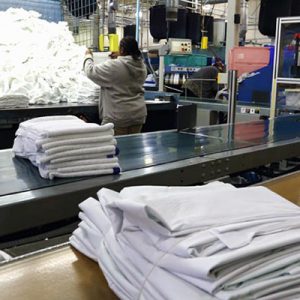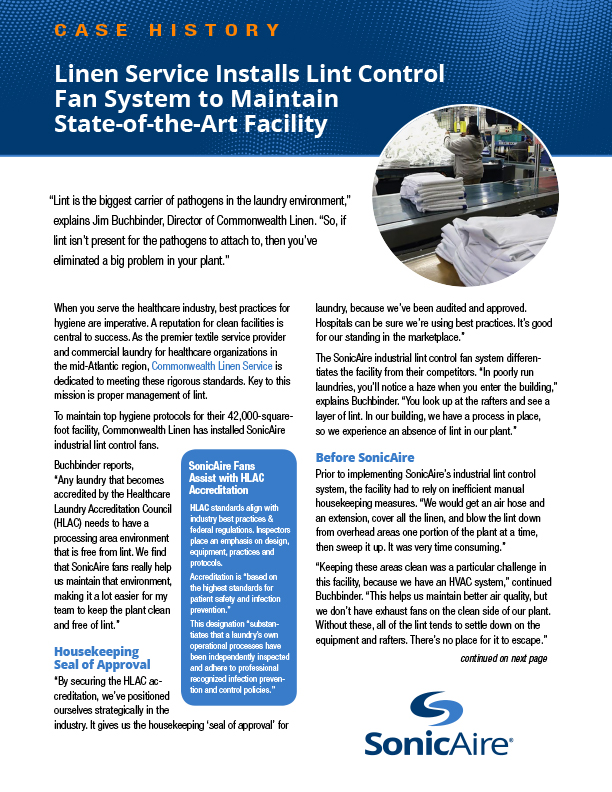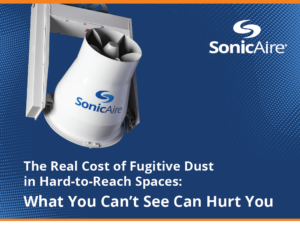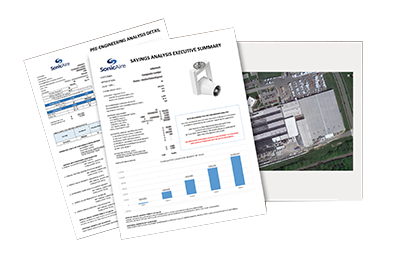 Commonwealth Linen Service
Commonwealth Linen Service
“Lint is the biggest carrier of pathogens in the laundry environment,” explains Jim Buchbinder, director of Commonwealth Linen. “So, if lint isn’t present for the pathogens to attach to, then you’ve eliminated a big problem in your plant.”
To maintain top hygiene protocols for their 42,000-square-foot facility, Commonwealth Linen has installed SonicAire industrial dust control fans.
Buchbinder reports, “Any laundry that becomes accredited by the Healthcare Laundry Accreditation Council (HLAC) needs to have a processing area environment that is free from lint. We find that SonicAire fans really help us maintain that environment, making it a lot easier for my team to keep the plant clean and free of lint.”
“Keeping these areas clean was a particular challenge in this facility, because we have an HVAC system,” continued Buchbinder. “This helps us maintain better air quality, but we don’t have exhaust fans on the clean side of our plant. Without these, all of the lint tends to settle down on the equipment and rafters. There’s no place for it to escape.”
 Lint that gets trapped in overhead areas accumulates and poses a fire hazard to the facility, supporting fire spread if the lint ignites.
Lint that gets trapped in overhead areas accumulates and poses a fire hazard to the facility, supporting fire spread if the lint ignites.
Buchbinder notes an added benefit from the SonicAire fans. As part of their marketing efforts, Commonwealth Linen Services offers facility tours to current and potential clients, and the indoor air quality is remarkable. Buchbinder reports that he hears great feedback about the absence of lint in their plant. “I constantly get comments,” he says. “It’s good for our employees, good for our customers and good for business.”
 Commonwealth Linen Service
Commonwealth Linen Service
“Lint is the biggest carrier of pathogens in the laundry environment,” explains Jim Buchbinder, director of Commonwealth Linen. “So, if lint isn’t present for the pathogens to attach to, then you’ve eliminated a big problem in your plant.”
To maintain top hygiene protocols for their 42,000-square-foot facility, Commonwealth Linen has installed SonicAire industrial dust control fans.
Buchbinder reports, “Any laundry that becomes accredited by the Healthcare Laundry Accreditation Council (HLAC) needs to have a processing area environment that is free from lint. We find that SonicAire fans really help us maintain that environment, making it a lot easier for my team to keep the plant clean and free of lint.”
“Keeping these areas clean was a particular challenge in this facility, because we have an HVAC system,” continued Buchbinder. “This helps us maintain better air quality, but we don’t have exhaust fans on the clean side of our plant. Without these, all of the lint tends to settle down on the equipment and rafters. There’s no place for it to escape.”
 Lint that gets trapped in overhead areas accumulates and poses a fire hazard to the facility, supporting fire spread if the lint ignites.
Lint that gets trapped in overhead areas accumulates and poses a fire hazard to the facility, supporting fire spread if the lint ignites.
Buchbinder notes an added benefit from the SonicAire fans. As part of their marketing efforts, Commonwealth Linen Services offers facility tours to current and potential clients, and the indoor air quality is remarkable. Buchbinder reports that he hears great feedback about the absence of lint in their plant. “I constantly get comments,” he says. “It’s good for our employees, good for our customers and good for business.”

GET YOUR FREE GUIDE:
The Real Cost of Fugitive Dust in Hard-to-Reach Spaces
What You Can’t See Can Hurt You
To help protect your workplace, we’ve compiled the following resource, The Real Cost of Fugitive Dust in Hard-to-Reach Spaces: What You Can’t See Can Hurt You. In it, we identify seven ways fugitive dust is likely impacting your facility and its profitability.
These costs go beyond housekeeping and explain why you should be preventing dust buildup to protect the bottom line, not just to stay in compliance.

